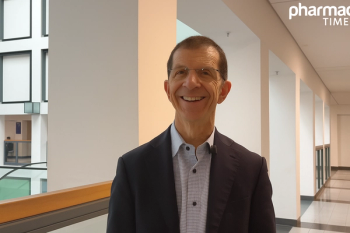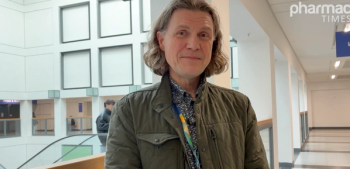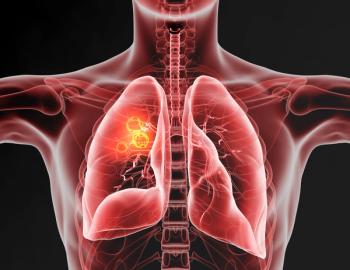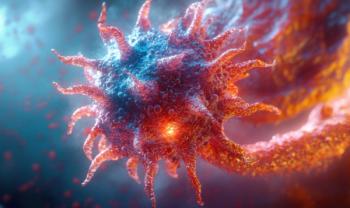
FDA Approves Carvykti for Relapsed or Refractory Multiple Myeloma
Majority of heavily pretreated patients with multiple myeloma administered ciltacabtagene autoleucel (cilta-cel; Carvykti) achieved deep responses after 18-months follow-up.
The FDA has granted approval to ciltacabtagene autoleucel (cilta-cel; Carvykti) for the treatment of adult patients with relapsed and/or refractory multiple myeloma (RRMM) following 4 or more prior lines of therapy, including a proteasome inhibitor, an immunomodulatory agent, and an anti-CD38 monoclonal antibody.1 Cilta-cel is a chimeric antigen receptor T-cell (CAR-T) therapy with 2 B-cell maturation antigen (BCMA)-targeting single domain antibodies.
“The responses in the CARTITUDE-1 study showed durability over time and resulted in the majority of heavily pretreated patients achieving deep responses after 18-month follow-up,” said principal study investigator Sundar Jagannath, MD, director of the Center of Excellence for Multiple Myeloma and Professor of Medicine, Hematology and Medical Oncology, at The Tisch Cancer Institute at the Icahn School of Medicine at Mount Sinai, in a press release. “The approval of cilta-cel provides physicians an immunotherapy treatment option that offers patients an opportunity to be free from anti-myeloma therapies for a period of time.”
The approval followed the results of the pivotal CARTITUDE-1 study, which found that when cilta-cel was given at the recommended dose of 0.75 x 106 CAR-positive viable T cells per kg, it produced an overall response rate (ORR) of 97.0% (95% CI, 91.2%-99.4%) in 97 patients.2 The stringent complete response (sCR) rate was 67% and the time to first response was 1 month (IQR, 0.9-1.0).
These responses were found to deepen over time. The median duration of response (DOR) was not yet reached at a median follow-up of 12.4 months (IQR, 10.6-15.2). Median progression-free survival (PFS) with cilta-cel was also not yet reached (95% CI, 16.8–not estimable). The PFS rate at 12 months was 77% (95% CI, 66.0%-84.3%) and the overall survival (OS) rate was 89% (95% CI, 80.2%-93.5%).
The trial included patients previously administered a median of 6 treatment regimens (range, 3-18). In November 2021, the FDA granted an extension to the Prescription Drug User Fee Act target date for the biologics license application for cilta-cel for use in adult patients with RRMM.3
On October 28, 2021, Janssen was notified of the extension to allow for adequate time to review recently submitted data associated with an updated analytical method following an information request issued by the regulatory agency. On November 1, 2021, Janssen and Legend Biotech Corporation met with the FDA, and no additional clinical data were requested. Because of the FDA's requests, the new decision date for the application was moved to February 28, 2022.
The single-arm, open-label, phase 1b/2 trial enrolled patients with multiple myeloma who were at least 18 years of age, had measurable disease at screening, and an ECOG performance status of 0 or 1. Patients needed to have previously been administered 3 or more prior lines of therapy or become double refractory to a proteasome inhibitor (PI) and an immunomodulatory drug (IMiD), and have received a PI, IMiD, and an anti-CD38 antibody, with documented progressive disease.
Patients were excluded if they previously received treatment with a CAR T-cell– or BCMA-targeted therapy. After the successful manufacturing of cilta-cel, patients underwent lymphodepletion with cyclophosphamide at 300 mg/m2 and fludarabine at 30 mg/m2, both administered daily for 3 days. At 5 to 7 days after the initiation of lymphodepletion, patients received a single infusion at a target dose of 0.75 x 106 CAR-positive viable T cells/kg (range, 0.5 x 106-1.0 x 106).
The primary end point of the phase 1b portion of trial was to examine the incidence and severity of adverse effects (AEs). The primary end point of the phase 2 portion was ORR. Secondary end points in both phases included sCR, complete response (CR), very good partial response (VGPR), DOR, rate of minimal residual disease negativity, PFS, and OS. Investigators also evaluated pharmacokinetic and pharmacodynamic markers.
The trial enrolled a total of 113 patients, all of whom underwent apheresis. Fourteen percent of patients did not receive the CAR T-cell therapy because of progressive disease (n = 2), study withdrawal (n = 2), or death (n = 8). A total of 101 patients underwent lymphodepletion, 4 of whom discontinued.
A total of 97 patients received cilta-cel; 29 of these whom received the product in the phase 1b portion and 68 did so in the phase 2 portion. Twenty-four patients in the phase 1b portion were still receiving treatment, as were 59 patients in the phase 2 portion.
The median age of patients was 61.0 years (IQR, 56.0-68.0), and 59% of patients were male. Moreover, most patients were White and non-Hispanic or non-Latino. Additionally, 24% of patients had a high-risk cytogenetic profile based on the presence of del(17p), t(14;16), or t(4;14), and 13% had extramedullary plasmacytomas at screening.
The median time from diagnosis was 5.9 years (IQR, 4.4-8.4), and patients received a median of 6 prior therapies (IQR, 4.0-8.0). Eighty-four percent of patients had been exposed to 5 drugs. Moreover, 84% were refractory to pomalidomide (Pomalyst), 65% to carfilzomib (Kyprolis), and 99% to anti-CD38 antibody treatment. Eighty-eight percent of patients were triple-class refractory, 42% were penta-drug refractory, and 99% were refractory to their last lane of therapy received.
Additional data showed that among those who achieved a CR or better, the 12-month PFS rate was 85% (95% CI, 72.0%-91.8%). In those who achieved a VGPR, this rate was 62% (95% CI, 42.1%-76.9%). Moreover, response rates were noted to be similar across the prespecified subsets analyzed.
All patients experienced toxicities, including grade 3 or 4 effects. The most common AEs reported were hematologic in nature; grade 3 or 4 hematologic toxicities included neutropenia (95%), anemia (68%), leukopenia (61%), thrombocytopenia (60%), and lymphopenia (50%).
Those who had grade 3 or 4 cytopenic events following day 1 of CAR T-cell infusion recovered to grade 2 or less by day 30 for lymphopenia (88%), neutropenia (70%), and thrombocytopenia (59%).
References
- US Food and Drug Administration grants BCMA CAR-T cilta-cel priority review for the treatment for relapsed/refractory multiple myeloma. News release. Legend Biotech Corporation. May 26, 2021. Accessed November 2, 2021.
https://bwnews.pr/3fNCQK8 - Berdeja JG, Madduri D, Usmani SZ, et al. Ciltacabtagene autoleucel, a B-cell maturation antigen-directed chimeric antigen receptor T-cell therapy in patients with relapsed or refractory multiple myeloma (CARTITUDE-1): a phase 1b/2 open-label study. Lancet. 2021;398(10297):314-324. doi:10.1016/S0140-6736(21)00933-8
- Legend Biotech announces extension of PDUFA date for cilta-cel. News release. Legend Biotech Corporation. November 1, 2021. Accessed November 2, 2021.
https://bit.ly/3GNZcIm
Newsletter
Stay informed on drug updates, treatment guidelines, and pharmacy practice trends—subscribe to Pharmacy Times for weekly clinical insights.















































































































































































































